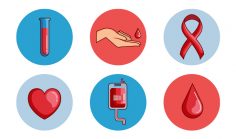In the United States alone, more than 240 million opioid prescriptions are dispensed every year and roughly 3% of all Americans are prescribed an opioid regimen for chronic non-cancer pain relief.
A common adverse side effect of opioid medications is opioid-induced constipation, or OIC, which occurs in 40% to 90% of patients taking opioids. If you are taking opioids, your doctor should evaluate you for any signs of OIC.
To more deeply understand OIC, we must first take a look at what opioids are, and how they can cause constipation. Constipation occurs when bowel movements become less frequent and more difficult to pass.
Opioid (or narcotic) pain medications— best known colloquially as “painkillers”, are a class of drugs commonly prescribed for their pain-reducing—or analgesic—qualities, and include substances like oxycodone, hydrocodone, codeine, and morphine. You might recognize these drugs by their brand names: Oxycontin, Vicodin, Percocet, among others. These medications have been used as a means of providing pain relief for many years. They are also are used for medical, as well as nonmedical, purposes, including:
Pain relief—With respect to pain relief, opioids are used to treat:
- Acute pain post-surgery—one of the most common clinical uses for opioids is to treat post-surgical acute pain
- Cancer pain—often used to relieve pain caused by cancer, especially in advanced or end stages. This is also referred to as palliative care, since these medications may be the only way to relieve terminal pain in patients at the end of their lives. About 70% of patients with advanced cancer commonly complain of pain.
- Injury or trauma—pain associated with injury or trauma is another common clinical use for opioids
- Pain arising from chronic disease—pain associated with severe, chronic, debilitating diseases, like complex regional pain syndrome may be treated with opioids.
Anesthesia—Opioids are typically used as anesthetic regimens that aid in surgical procedures.
Cough suppression—Opioids (such as codeine), combined with other agents, may suppress cough, and some are used for this clinical purpose, especially if a dry and non-productive cough presents.
Diarrhea suppression—Opioids typically cause constipation, and as such, they are sometimes utilized in the treatment of diarrhea
Addiction treatment —Certain types of opioids, methadone in particular, are used to help opiate or narcotic addicts wean off stronger opioids like heroin to help prevent severe withdrawal symptoms.
Severe Anxiety—In very rare cases, opioids may be used to treat severe anxiety.
The vast majority of patients receiving long-term opioid pain medication are in advanced stages of their disease. Despite their analgesic benefits, opioids can cause a number of side effects, the most commonly occurring of which is opioid-induced constipation, or OIC. Patients develop a tolerance for many of the other side effects of opioids, such as respiratory depression. However, patients generally do not develop a tolerance to OIC. Altogether, studies indicate that as many as 81% of patients who are prescribed opioids experience OIC.











